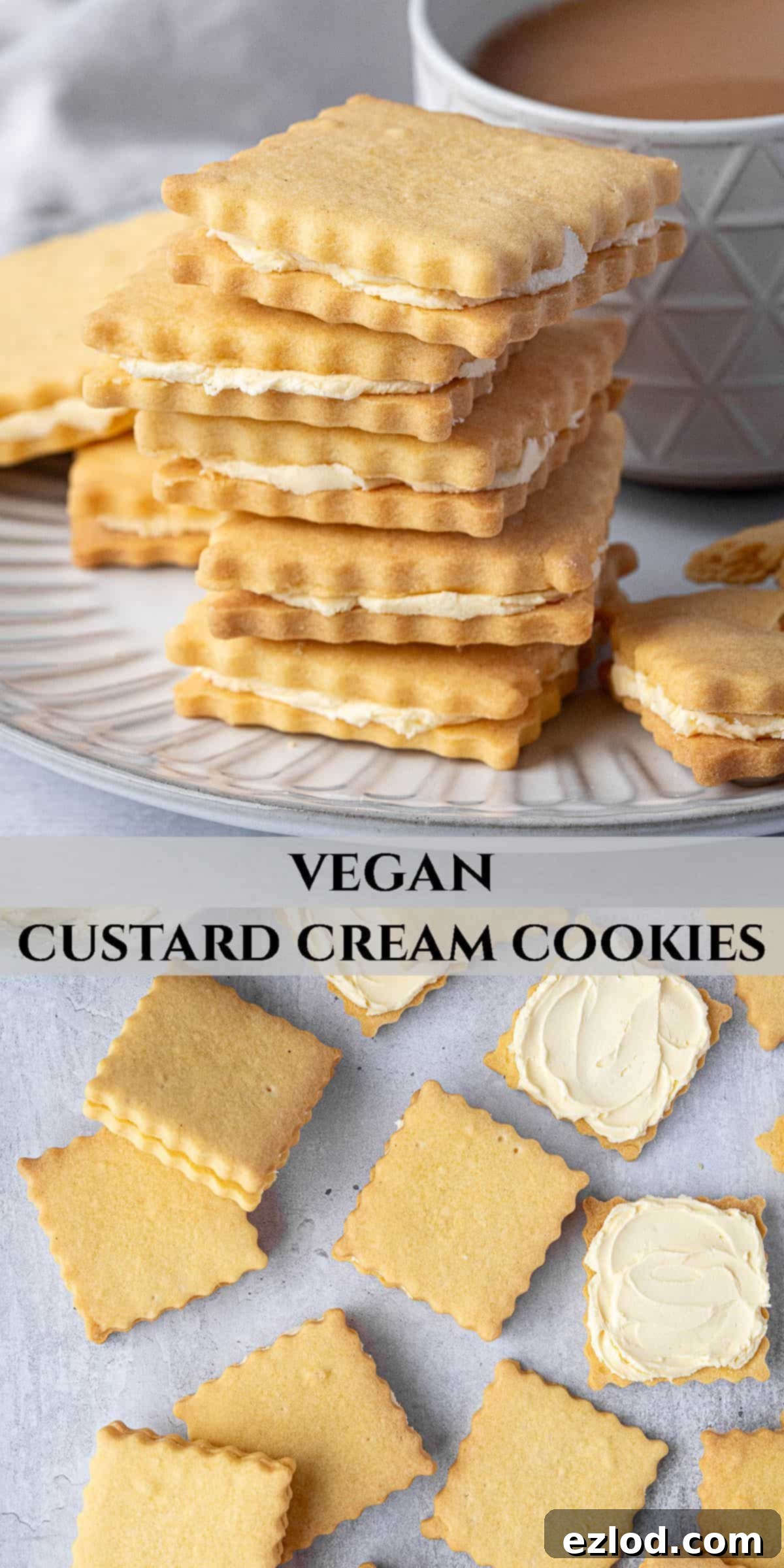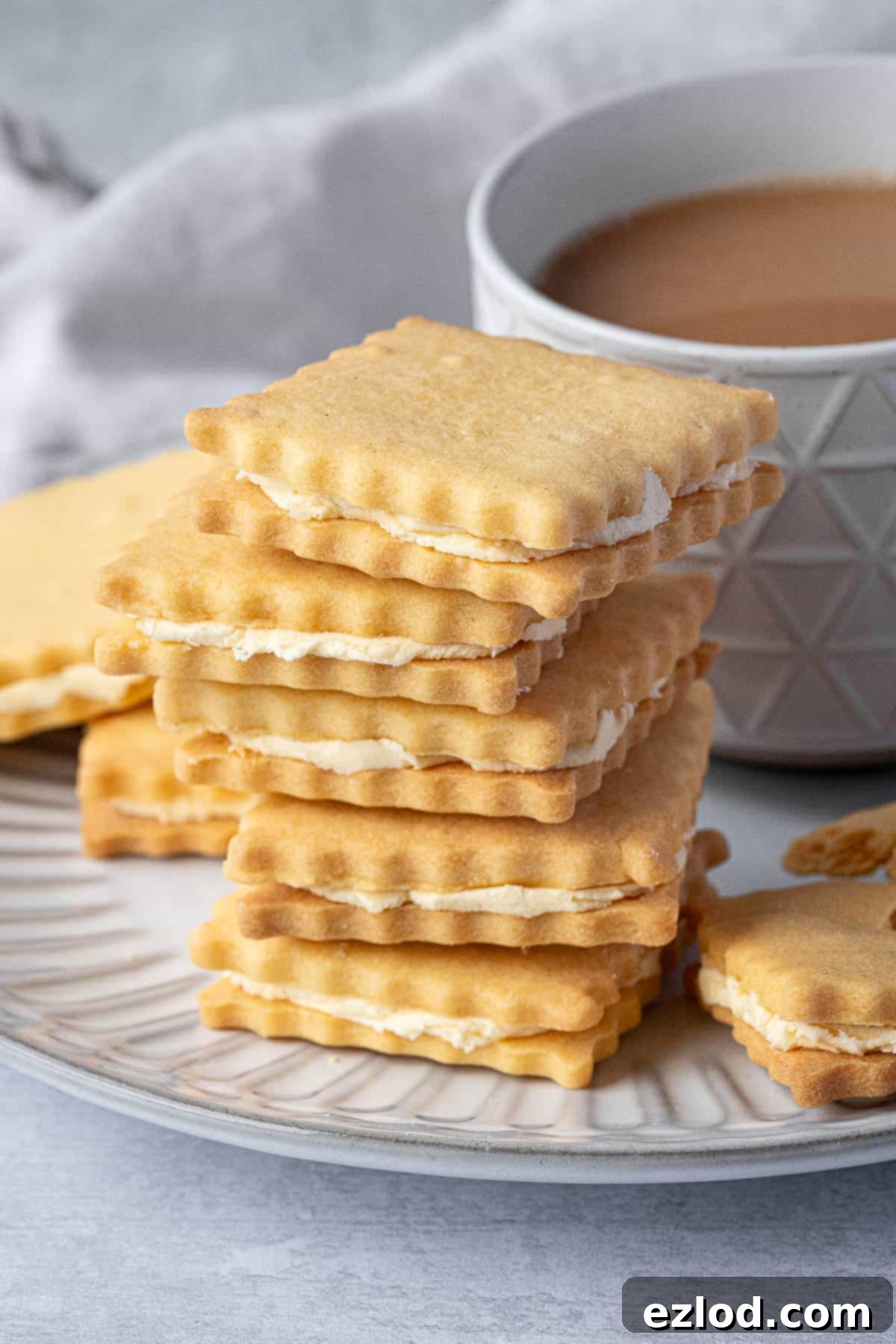Nostalgic Delight: The Ultimate Guide to Homemade Vegan Custard Creams
Custard cream biscuits are undeniably one of Britain’s most cherished and iconic treats, evoking a sense of sweet nostalgia with every bite. For years, the delightful crunch and creamy filling of these classic biscuits were off-limits for those following a vegan diet. However, that era is over! We’re thrilled to bring you a simple, yet incredibly satisfying, recipe for homemade vegan custard creams that captures all the charm and deliciousness of the original. Imagine sinking your teeth into a perfectly crisp, light shortbread-style biscuit, infused with that unmistakable delicate custard flavour, generously filled with a smooth, sweet, and creamy vanilla buttercream. These golden-hued beauties are not just a snack; they are the quintessential companion for your afternoon tea, promising a moment of pure bliss with every dunk.
For many, shop-bought custard creams were a childhood favourite, a staple in the biscuit tin. Unfortunately, traditional recipes rely on dairy products, making them unsuitable for vegans. But fear not! This recipe proves that you don’t have to miss out on this beloved classic. Making vegan custard creams at home is surprisingly straightforward, requiring just a few simple ingredient swaps to transform them into a plant-based delight that everyone can enjoy. This guide will walk you through every step, ensuring your homemade version is just as good, if not better, than the ones you remember.
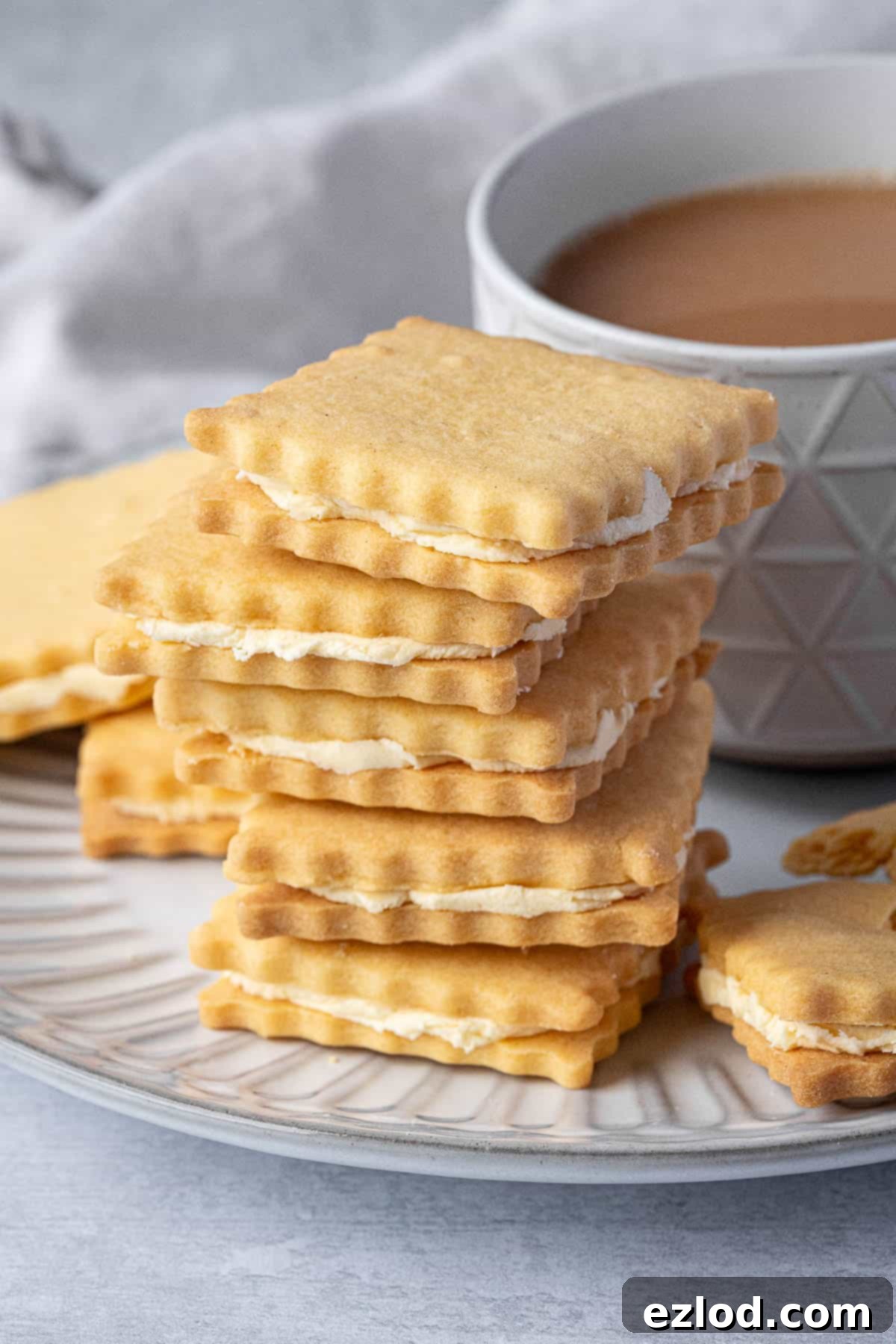
What Are Custard Creams? A British Classic Rediscovered
Often topping lists of favourite British biscuits, custard creams hold a special place in the nation’s heart. These delightful sandwich biscuits are believed to have originated in the early 1900s, quickly becoming a household name. At their core, a custard cream consists of two crisp, shortbread-style biscuits, uniquely flavoured with custard powder, and then bound together by a luscious layer of sweet vanilla buttercream. The distinctive pale yellow colour and delicate, slightly sweet flavour of the biscuit are instantly recognizable.
What truly sets custard creams apart, beyond their taste, is their iconic appearance. Traditional shop-bought versions are always rectangular, featuring an intricately embossed baroque-style pattern, often with the words “custard cream” elegantly imprinted onto the surface. This elaborate design is almost as famous as the biscuit itself. While you can find specialized cookie cutters designed to replicate this classic design, there’s no need to feel limited. You can use any cookie cutters you desire, from simple squares to charming hearts or circles, making these biscuits your own unique creation. The beauty of baking at home is the freedom to personalize, ensuring your vegan custard creams are both delicious and aesthetically pleasing.
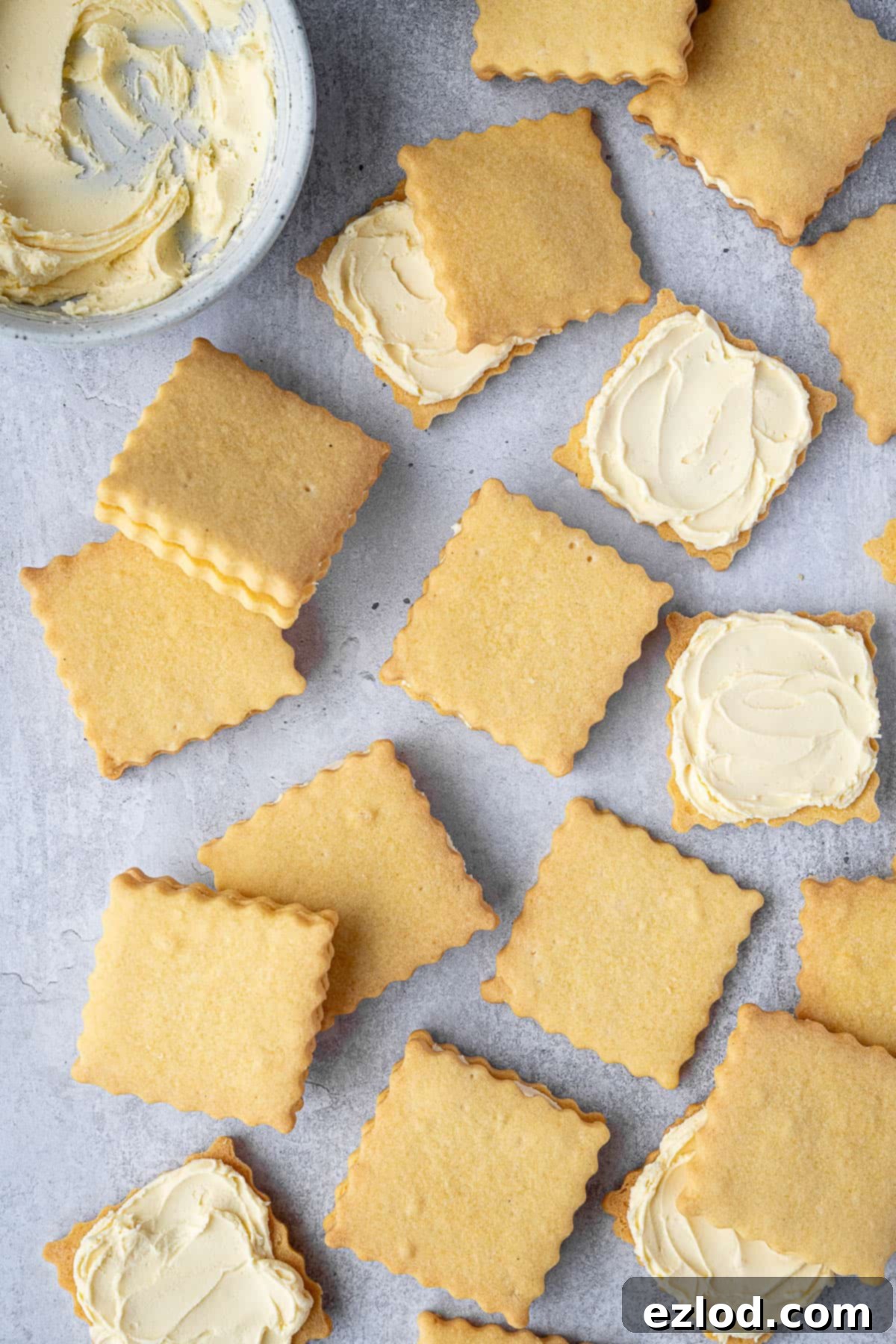
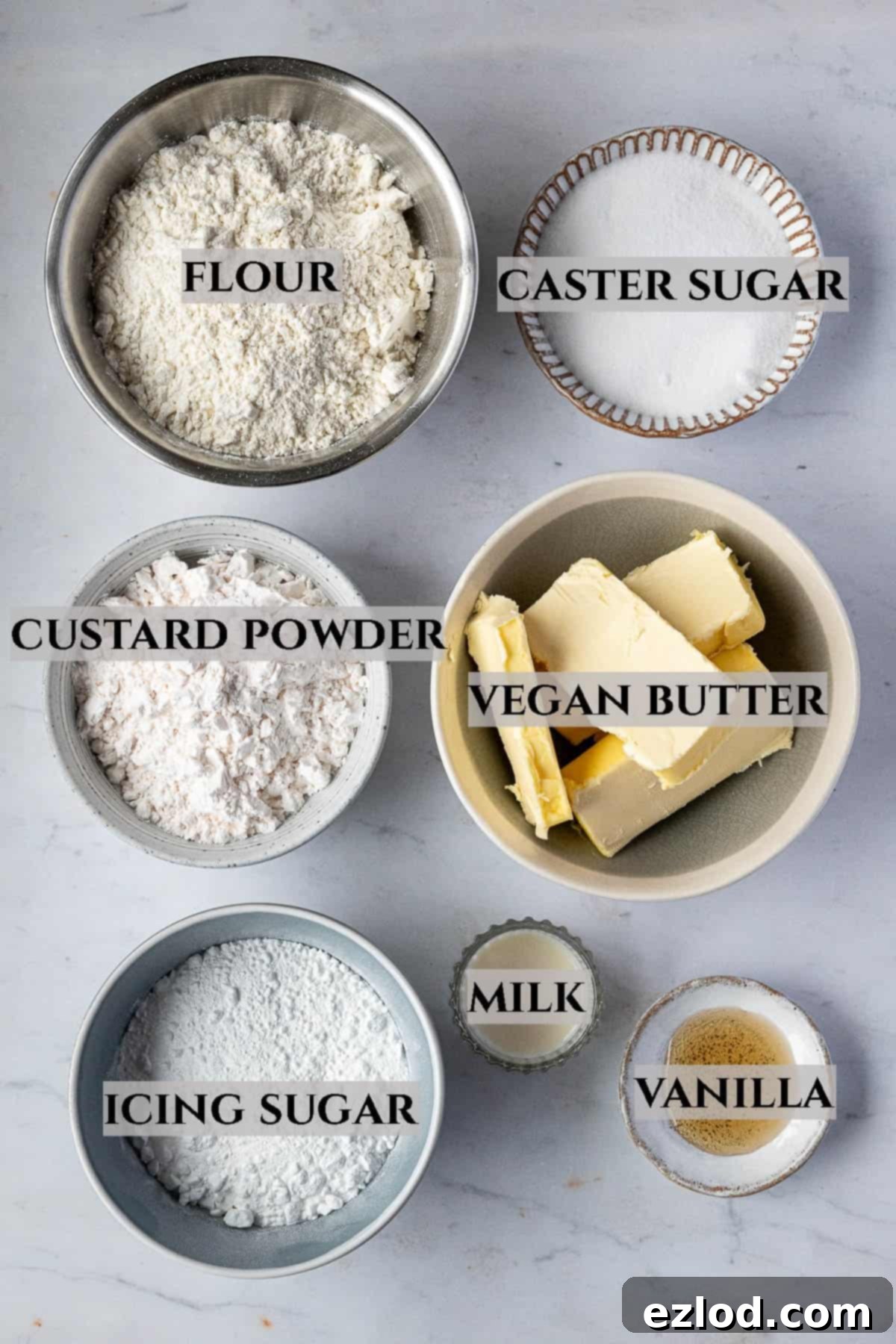
Essential Ingredient Details for Perfect Vegan Custard Creams
Crafting the perfect vegan custard cream involves understanding the role of each ingredient. Here’s a detailed breakdown of what you’ll need and why it’s important for achieving that authentic taste and texture:
Custard powder: This is the star ingredient that bestows the biscuits with their signature flavour and distinct yellow hue. Beyond its taste contribution, custard powder, primarily composed of cornflour (cornstarch), plays a crucial role in achieving the desired light and crisp texture. It helps to tenderize the dough and prevents the biscuits from becoming too dense. Most widely available custard powders, such as Bird’s Eye, are naturally vegan-friendly, but always double-check the ingredient list on the packet to ensure no hidden animal products.
Vegan block butter: This is perhaps the most critical ingredient for both the biscuit dough and the buttercream. For the love of superior baking, it is absolutely essential to use a solid block butter or margarine, not the spreadable kind that comes in a tub. Spreadable vegan butter typically contains a higher water content, which can lead to a dough that is too soft and difficult to handle, resulting in tough or overly chewy biscuits. More importantly, using spreadable butter for the buttercream risks it splitting or failing to emulsify properly, yielding a runny or grainy filling instead of a smooth, creamy one. Brands like Naturli Vegan Block or Flora Plant Butter are excellent choices due to their consistent texture and performance, closely mimicking dairy butter in baking.
Plain flour: Standard plain (all-purpose) flour is ideal for this recipe. It provides the necessary structure without making the biscuits overly chewy. The goal is a tender, crumbly shortbread texture. While I haven’t specifically tested this recipe with gluten-free flour blends, successful gluten-free baking often requires specific adjustments and additional ingredients, so for best results with this recipe, stick to regular plain flour. Overworking the dough should be avoided to prevent gluten development, which can lead to a tougher biscuit.
Sugar: Caster sugar (superfine sugar) is recommended for the biscuit dough because its fine granules dissolve easily, contributing to a smooth texture without grittiness. Granulated sugar or even finely ground icing sugar (powdered sugar) can also work if caster sugar isn’t available. For the buttercream, icing sugar (powdered sugar) is non-negotiable. Its ultra-fine texture ensures a silky-smooth, lump-free frosting that melts in your mouth.
Vanilla extract: High-quality vanilla extract is paramount for enhancing the overall flavour profile of both the biscuits and the buttercream. It complements the custard powder beautifully, adding a layer of warmth and sweetness. If you want to elevate the flavour even further, vanilla bean paste is an excellent alternative, offering a more intense and authentic vanilla taste with visible specks of vanilla bean.
Milk: Traditional custard creams often contain egg, which provides moisture and acts as a binder. To replace this in our vegan version, a small amount of plant milk is used. This adds essential moisture to the dough, ensuring it comes together beautifully and bakes evenly. Any unsweetened non-dairy milk will work, but soy milk is often preferred in baking for its neutral flavour and good protein content, which can contribute to a slightly richer texture. Almond, oat, or rice milk are also suitable alternatives.
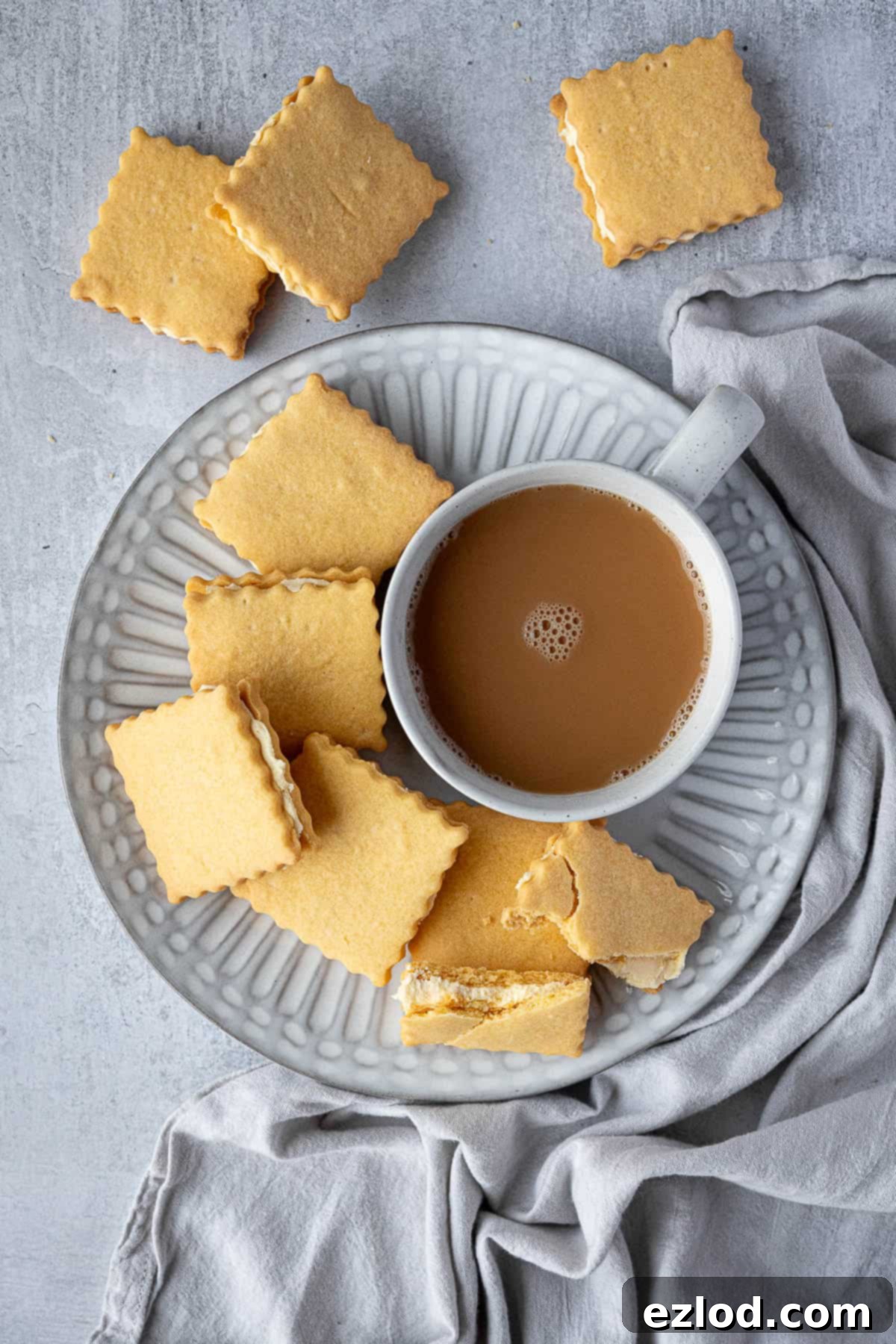
How To Make Delicious Homemade Vegan Custard Creams: A Step-by-Step Guide
(For precise measurements and detailed instructions, please refer to the comprehensive recipe card located at the bottom of this page.)
Creating these delightful vegan custard creams is a joyful process. Follow these steps for perfect results:
Step 1: In a large mixing bowl, combine your slightly softened vegan block butter with the caster sugar, vanilla extract, and non-dairy milk. Cream these ingredients together using an electric mixer or a sturdy whisk until the mixture is light, smooth, and well-combined. Avoid over-beating, as incorporating too much air can affect the biscuit’s texture.
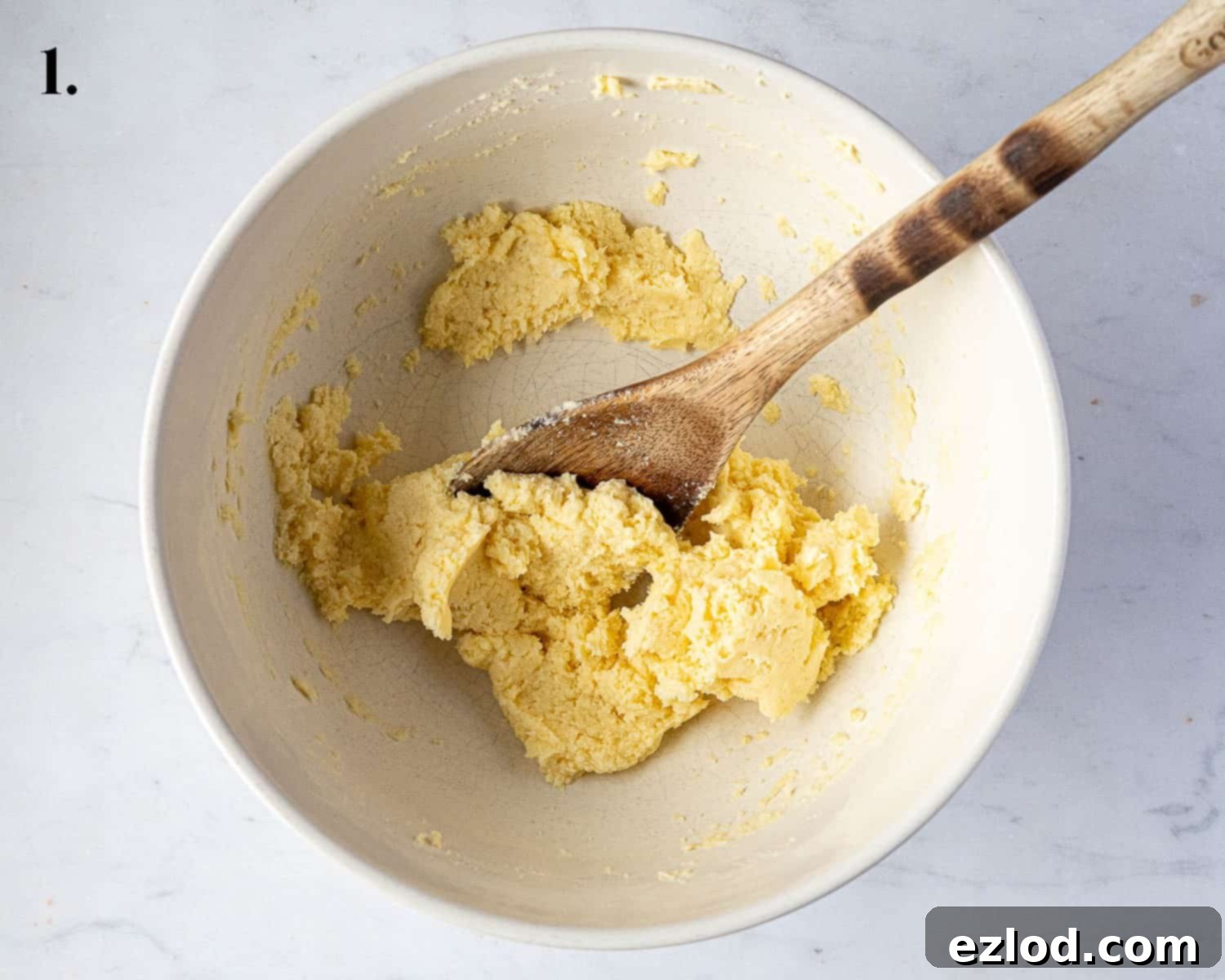
Step 2: Carefully add the custard powder to the creamed butter mixture. Mix gently until the custard powder is fully incorporated and the mixture has a consistent pale yellow colour. Scrape down the sides of the bowl to ensure everything is evenly combined.
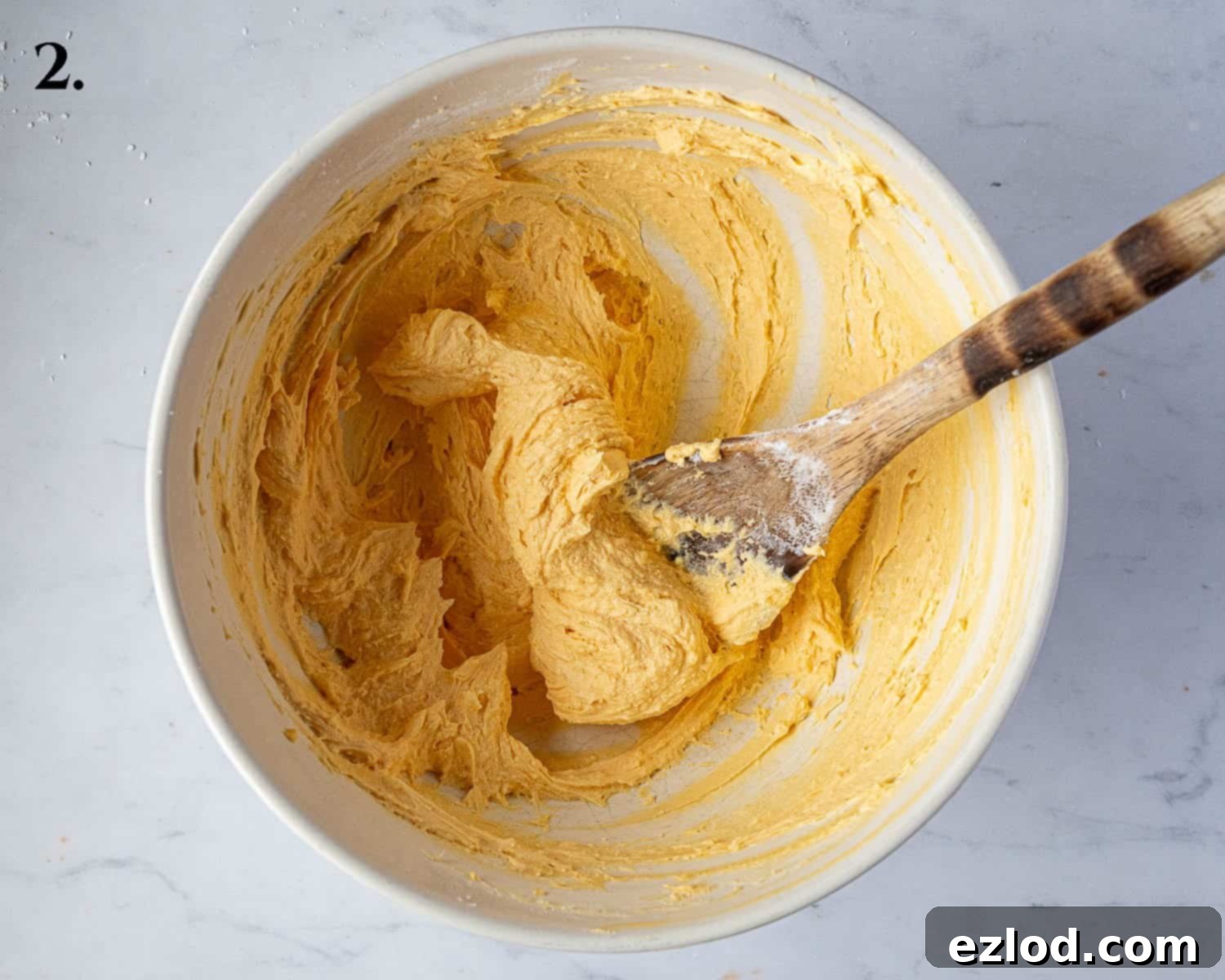
Step 3: Gradually add the plain flour to the bowl. Mix on a low speed or by hand until a soft, cohesive dough forms. It’s crucial not to overwork the dough at this stage, as excessive mixing can develop the gluten, leading to tough biscuits. If your dough feels too soft or sticky to roll out easily, wrap it in clingfilm and refrigerate it for about 30-60 minutes to allow it to firm up.
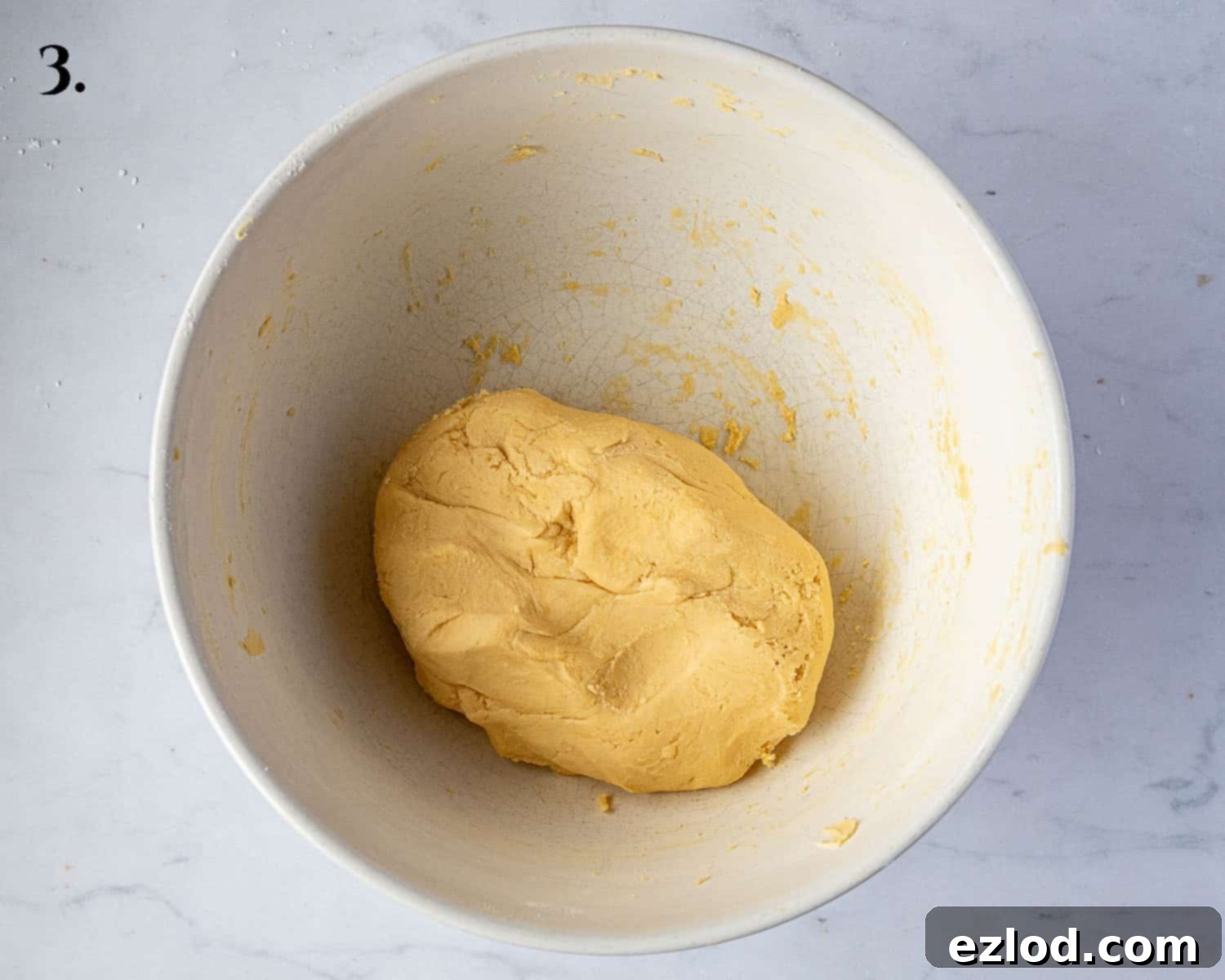
Step 4: Lightly flour your work surface and rolling pin. Roll out the chilled dough to an even thickness of approximately 4mm (about ⅛ inch). Using your chosen cookie cutter, cut out as many biscuit shapes as possible. Gather the dough scraps, gently re-roll them, and cut out more biscuits until all the dough is used.
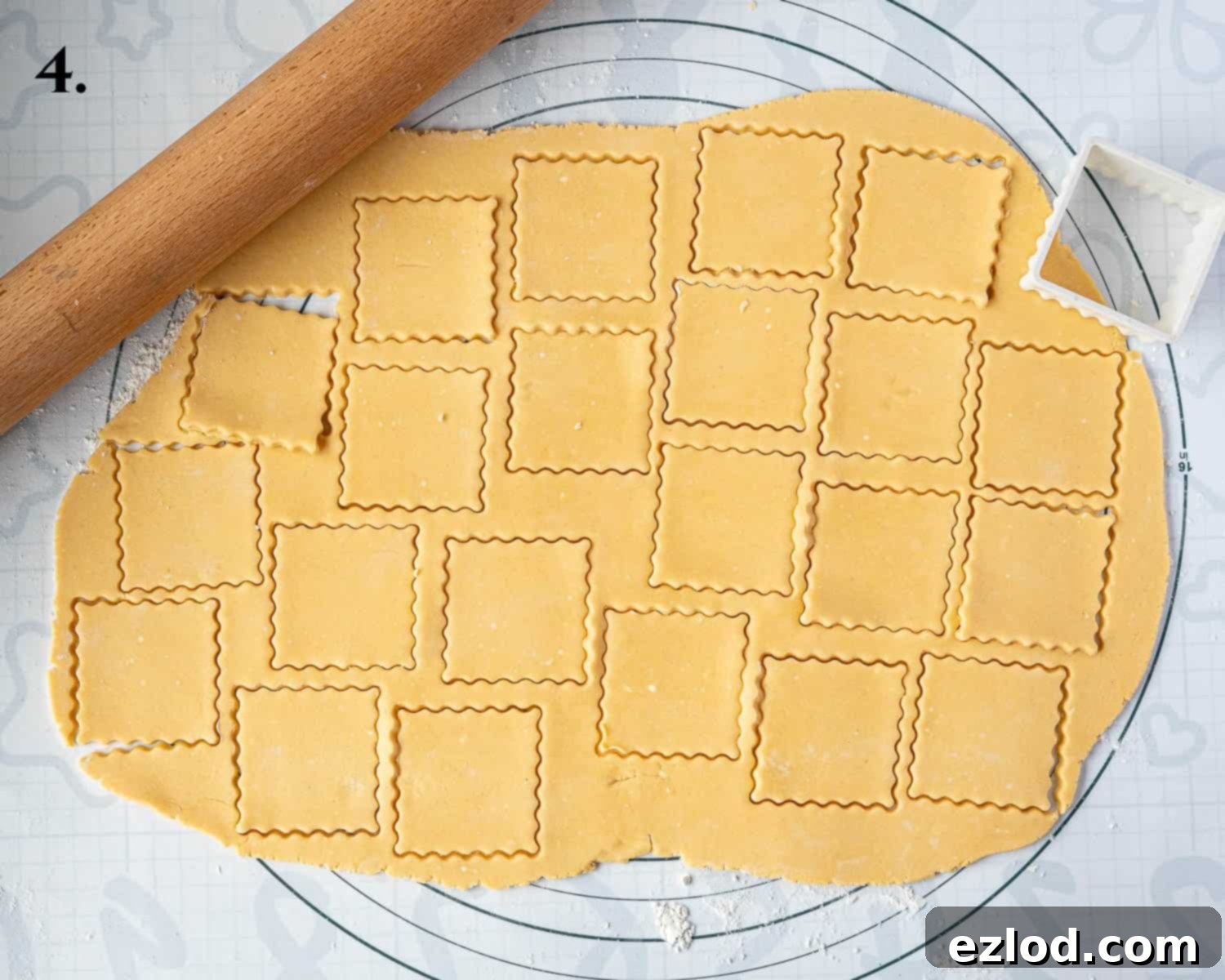
Step 5: Carefully transfer the cut-out biscuits to baking sheets lined with parchment paper, leaving a small space between each. This ensures even baking. Once arranged, place the baking sheets into the freezer for 15 minutes. This crucial chilling step helps the biscuits hold their shape beautifully during baking and prevents excessive spreading.
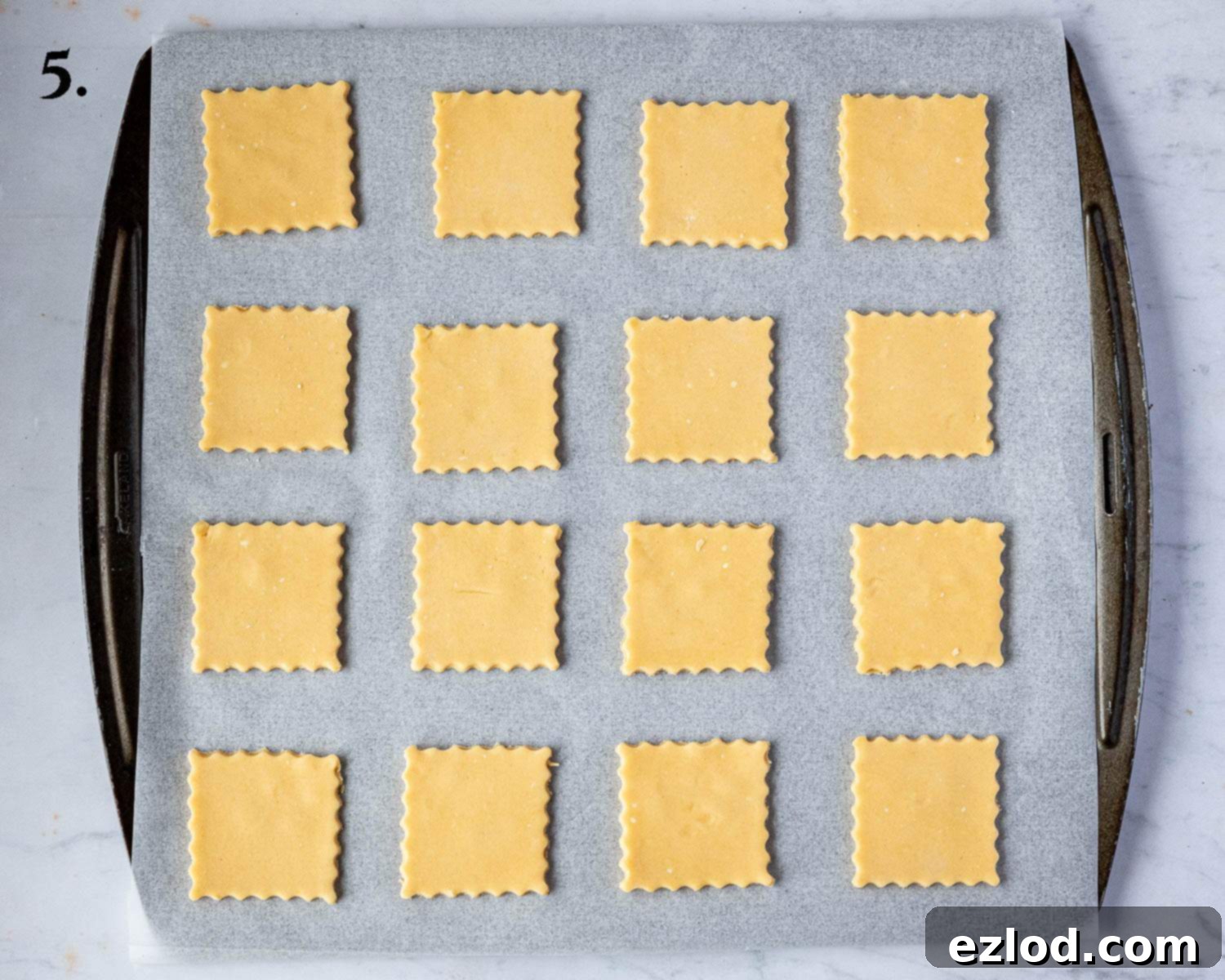
Step 6: Preheat your oven to 180℃/160℃ fan/350℉/gas mark 4. Bake the chilled biscuits for 12-15 minutes, or until their edges are lightly golden and the centres appear set. Avoid over-baking to maintain their delicate texture. Let them cool on the baking sheets for a couple of minutes before carefully transferring them to a wire rack to cool completely.
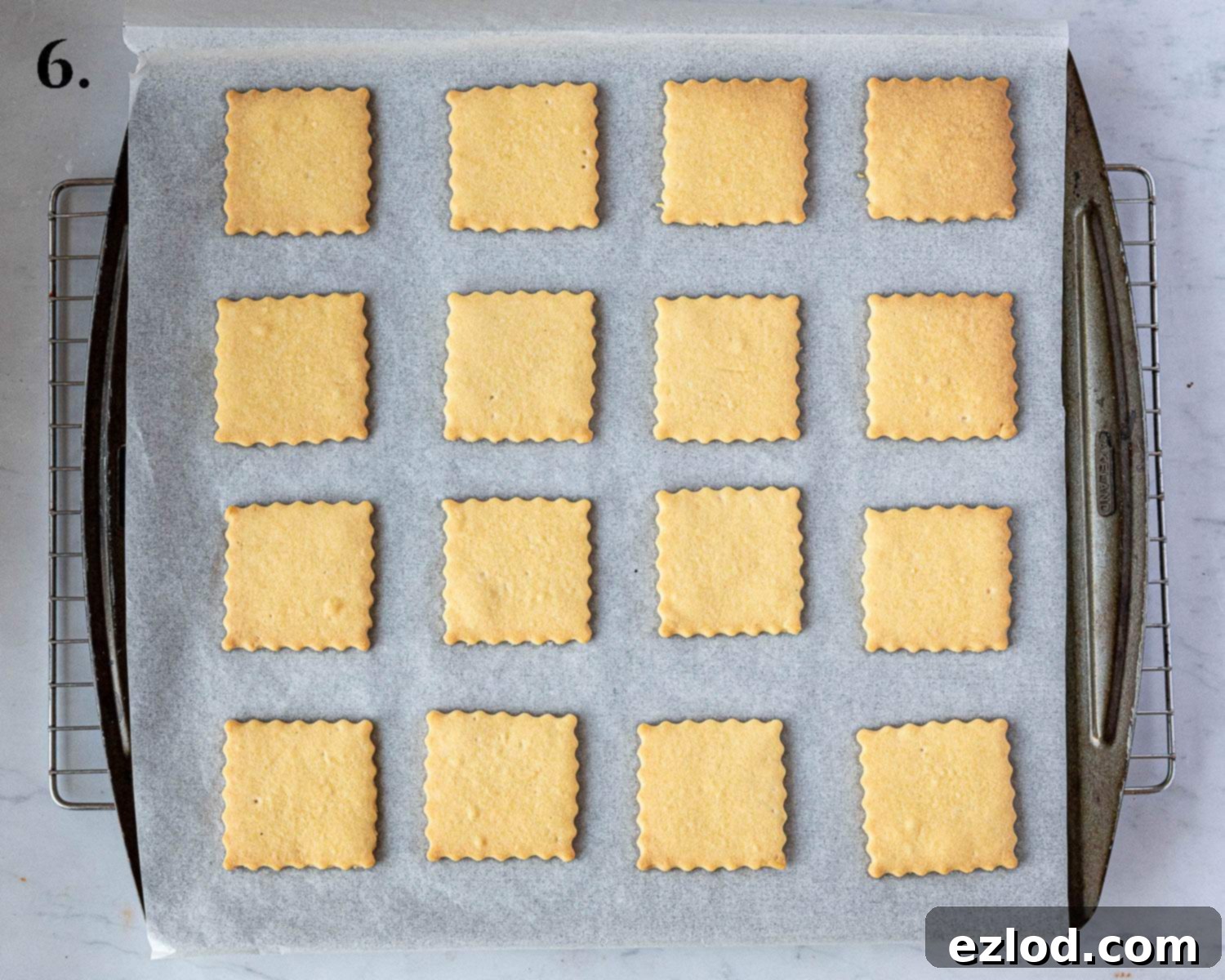
Step 7: While the biscuits are cooling, prepare the creamy filling. In a clean bowl, whisk the softened vegan block butter until it’s smooth and creamy. Then, gradually add the vanilla extract, a tablespoon of custard powder, and the sifted icing sugar. Continue whisking until the buttercream is light, fluffy, and perfectly smooth. If it seems too stiff, add a tiny splash of plant milk; if too soft, add a bit more icing sugar.
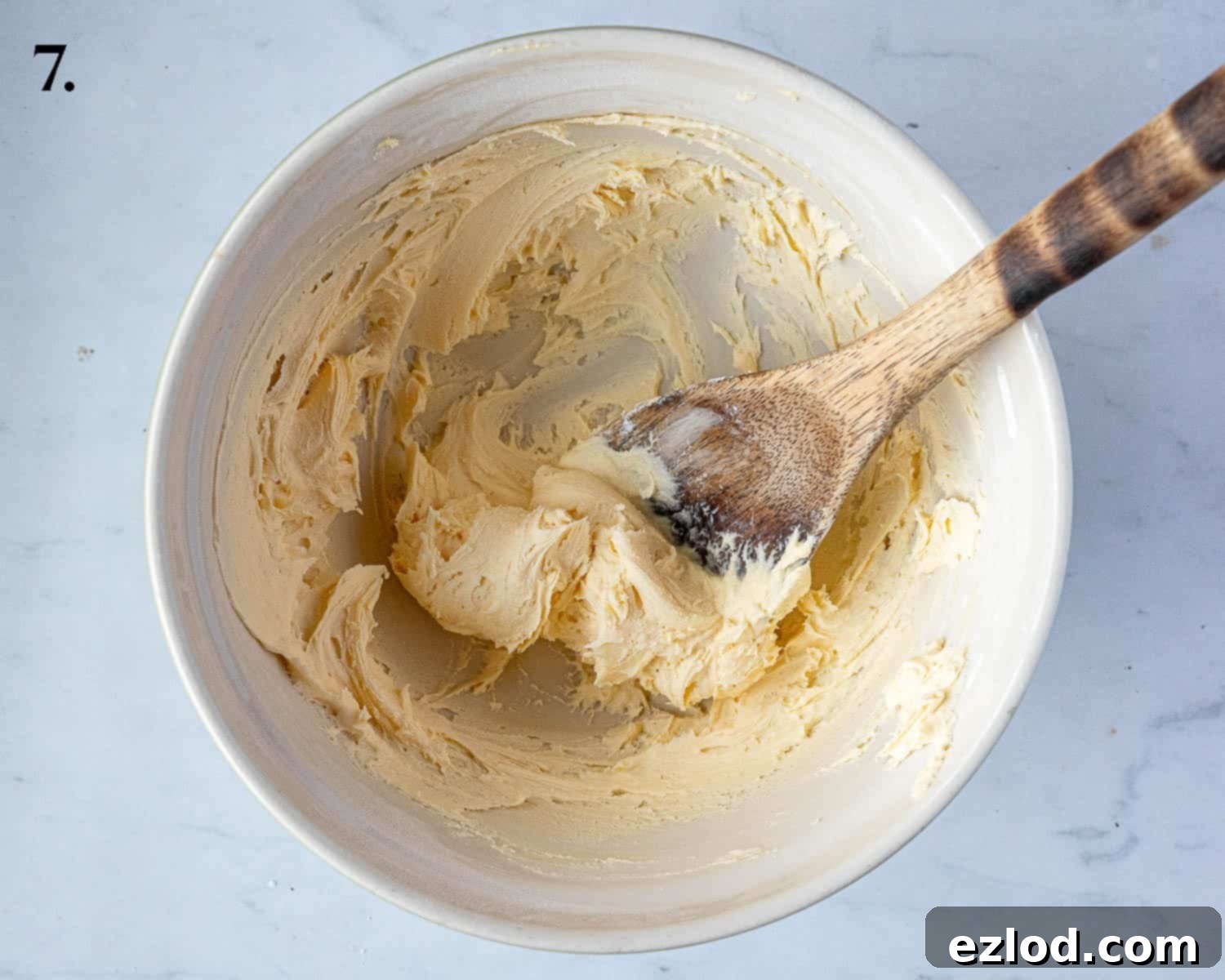
Step 8: Once the biscuits are completely cool, take half of them and spread a thin, even layer of the prepared buttercream over the flat base of each. Top with another biscuit, gently pressing down to create a sandwich. Repeat with the remaining biscuits and buttercream. Your homemade vegan custard creams are now ready to be enjoyed!
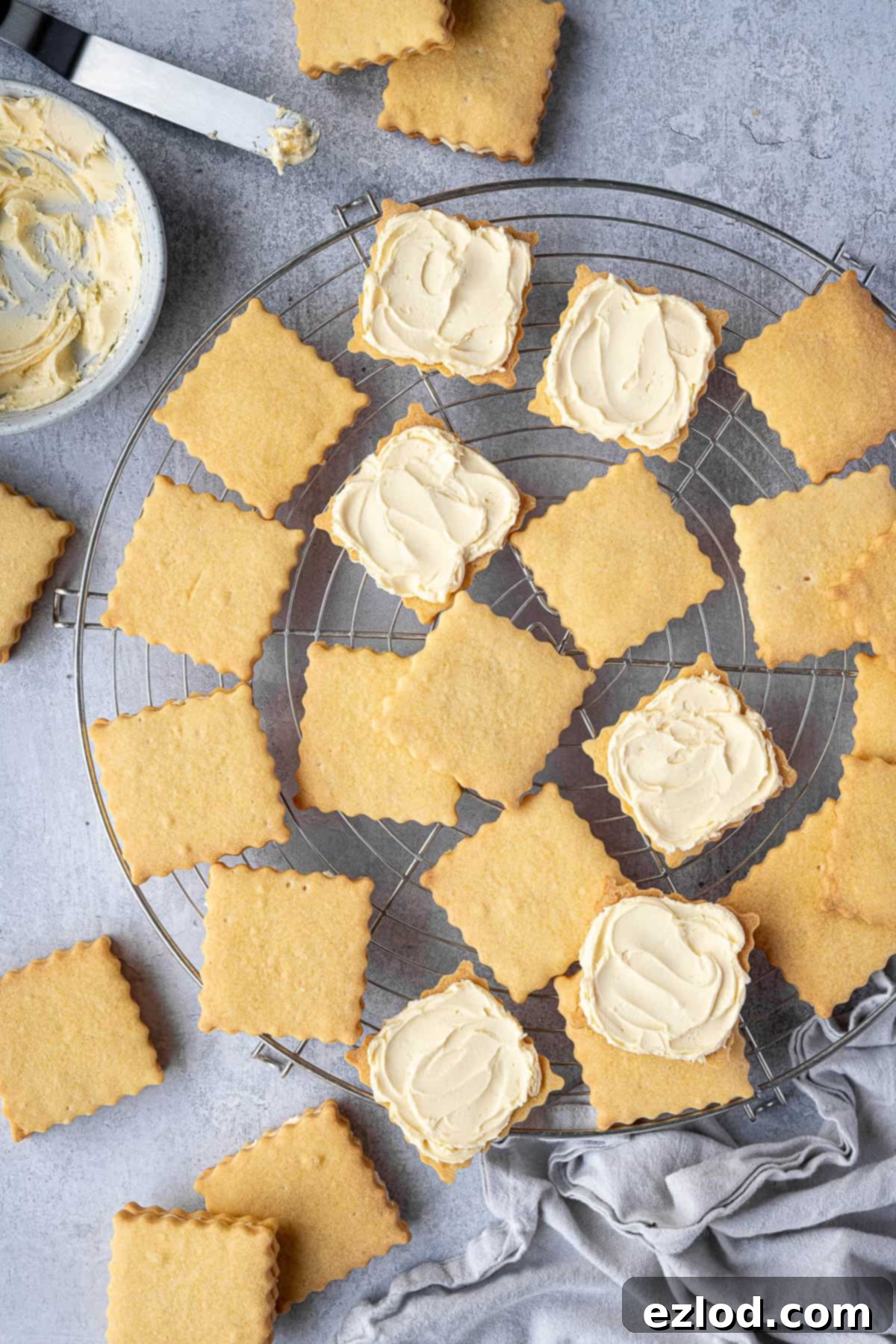
Top Tips for Vegan Custard Cream Perfection
Achieving bakery-quality vegan custard creams is easier than you think with these expert tips:
- Precision is Key with Measurements: All professional recipes, including mine, are developed using metric measurements (grams). For baking, particularly with delicate biscuits like these, I cannot stress enough the importance of using a digital scale. Cups are an incredibly inaccurate measuring system due to variations in how ingredients are packed, leading to inconsistent results. A digital scale ensures accuracy, resulting in better, more consistent bakes, and is often less messy too!
- Avoid Overworking the Dough: Shortbread-style biscuits like custard creams benefit from minimal handling. Overworking the dough develops the gluten in the flour, which can lead to chewy, rather than crisp and tender, biscuits. Mix the ingredients just until they are fully combined and the dough comes together. A light touch is your best friend here.
- Don’t Skip the Chill: If your dough feels too soft to roll out or is becoming sticky, wrap it tightly in clingfilm and refrigerate it for at least an hour. Chilling allows the vegan butter to firm up, making the dough much easier to handle and roll. It also helps prevent the biscuits from spreading too much in the oven, maintaining their beautiful shape.
- Pre-Bake Freeze for Shape Retention: Freezing the cut-out cookies for 15 minutes before baking is a small but powerful step. This quick freeze solidifies the butter in the dough, significantly reducing the chances of your biscuits spreading excessively during baking. You’ll end up with perfectly shaped, crisp biscuits every time.
- Roll to the Right Thickness: Aim for a dough thickness of approximately 4mm (about ⅛ inch). If the dough is rolled too thickly, the biscuits might not bake through properly and won’t achieve that desirable crisp texture. Too thin, and they might become overly fragile. Precision here ensures the perfect bite.
- Cool Completely Before Filling: This tip is crucial for the buttercream. Ensure your biscuits are absolutely, entirely cool before you even think about adding the creamy filling. Warm biscuits will melt the buttercream, turning your perfectly fluffy filling into a runny mess, and compromising the biscuit’s crispness.
- Perfect Your Buttercream: When making the buttercream, ensure your vegan block butter is softened, but not melted. If it’s too cold, it won’t cream properly; if too warm, it can become greasy or split. Whisking for a few minutes until light and fluffy before adding the dry ingredients is key for an airy texture.
FAQ’S: Your Vegan Custard Cream Questions Answered
Absolutely! This is a great way to break up the baking process. The unrolled dough, tightly wrapped in clingfilm, can be stored in the refrigerator for up to 3 days. When you’re ready to bake, remove the dough from the fridge and let it sit at room temperature for about half an hour or until it’s pliable enough to roll out without cracking. If it’s too firm, it may crack when rolled; if too soft, it will be sticky.
Yes, you can freeze both! For unbaked cookies, cut out your shapes and arrange them in a single layer on a parchment-lined baking sheet. Freeze until solid, then transfer them to an airtight, freezer-proof container or bag. They can be baked straight from the freezer – no need to defrost – simply add a minute or two to the baking time. Baked (unfilled) biscuits also freeze well for up to a month. Thaw at room temperature before filling. I generally don’t recommend freezing them once filled with buttercream, as the texture of the filling can change upon thawing.
The unfilled custard cream biscuits will retain their crispness and flavour for about a week when stored in an airtight container at room temperature. Once filled with buttercream, they are best enjoyed within 3-4 days. While they will still be delicious after that, the biscuits may start to soften slightly due to the moisture from the buttercream. Always keep them in an airtight container to maintain freshness and texture.
If your buttercream appears curdled or split, it’s usually due to temperature differences or using the wrong type of vegan butter. The most common fix is to gently warm a small portion of the buttercream (e.g., in the microwave for a few seconds) until it’s just starting to melt, then slowly add it back to the rest of the buttercream while whisking vigorously. Alternatively, add a teaspoon of sifted icing sugar and whisk again. Ensure your vegan block butter for the buttercream is at a perfect room temperature – softened, but still cool to the touch. Using block butter (not spreadable) is key to preventing splitting.
Absolutely! While vanilla is classic, feel free to experiment. You could add a touch of almond extract for an almond custard cream, a tiny amount of food-grade orange or lemon zest for a citrusy twist, or even a hint of espresso powder for a coffee-flavoured filling. Just be mindful not to add too much liquid when experimenting with extracts or flavourings, as this can alter the consistency of your buttercream.
More Vegan Biscuit & Cookie Recipes to Explore
If you’ve enjoyed making these delightful vegan custard creams, why not explore other plant-based biscuit and cookie recipes? The world of vegan baking is full of delicious possibilities!
- Chocolate Viennese Whirls: Delicate piped shortbreads with a rich chocolate filling.
- Vegan Hazelnut Shortbread: A nutty twist on a classic, offering a lovely crunch.
- Vegan Lemon Sandwich Cookies: Bright, zesty, and refreshing, perfect for spring and summer.
- Vegan Gingerbread Cookies: Spiced and sweet, a holiday favourite that’s great all year round.
- Vegan Shortbread Fingers: The ultimate simple pleasure, buttery and crumbly.
- Vegan Coconut Cookies: Chewy and tropical, a delightful escape.
- Vegan Chocolate Orange Shortbread: A sophisticated blend of rich chocolate and vibrant orange.
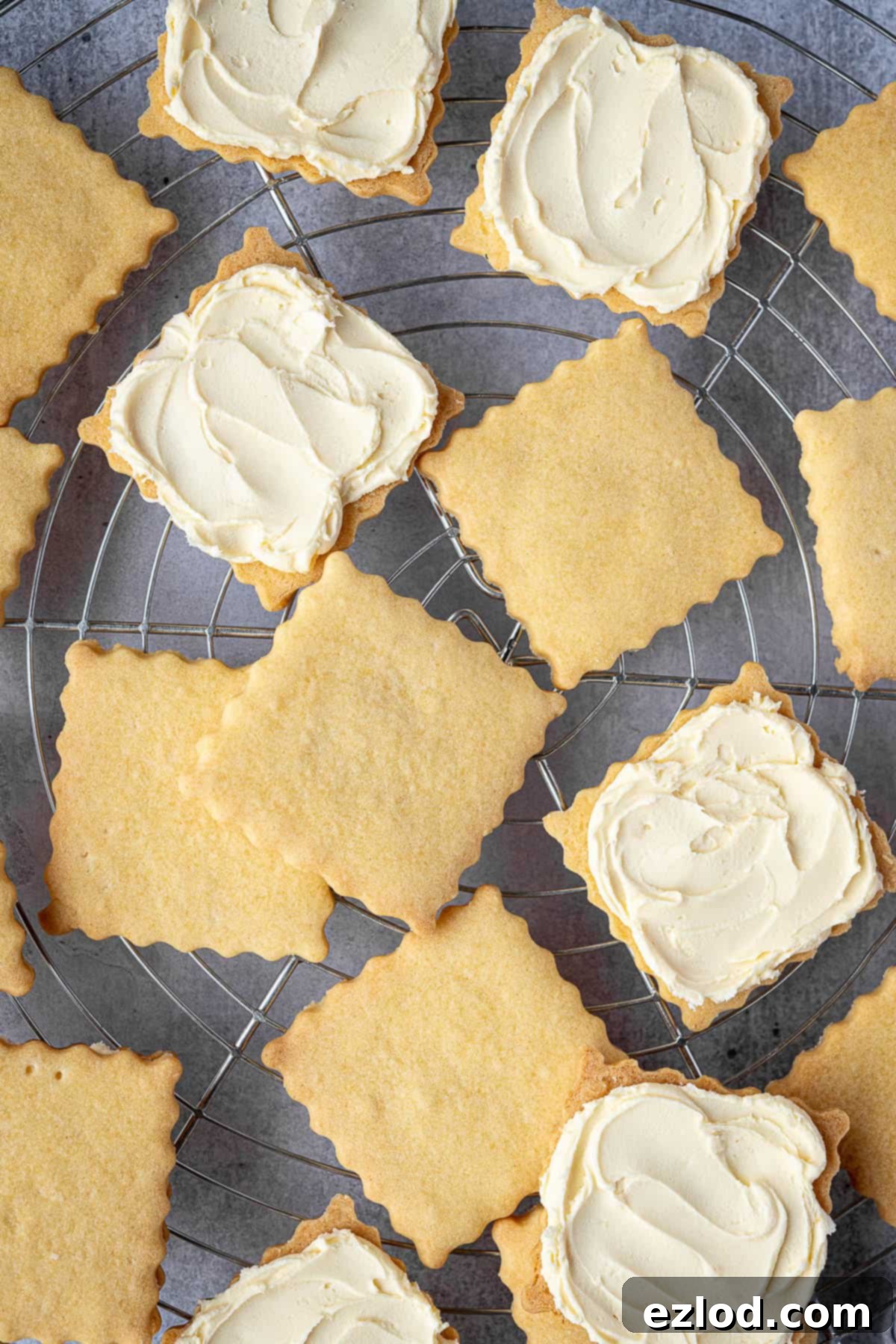
If you tried this recipe, we’d love to hear from you! Please rate it, leave a comment below, or share your creations by tagging @domestic_gothess on Instagram and using the hashtag #domesticgothess. Your feedback and photos inspire us!
All images and content on Domestic Gothess are copyright protected. If you wish to share this recipe, please do so by utilizing the provided share buttons. Please do not screenshot, copy, or post the recipe or content in its entirety. Instead, kindly include a direct link to this post for the complete recipe. Thank you for your understanding and support!

Print
Vegan Custard Creams
Ingredients
Biscuits:
- 160 g (⅔ cup) vegan block butter slightly softened, essential for texture
- 65 g (¼ cup + 1 Tablespoon) caster (superfine) sugar for fine texture
- 1 teaspoon vanilla extract use a good quality one
- 1 Tablespoon unsweetened non-dairy milk soy milk recommended for baking
- 65 g (7 Tablespoons) custard powder gives classic flavour and colour
- 200 g (1+ ⅔ cup) plain (all-purpose) flour do not substitute with gluten-free for this recipe
Buttercream:
- 50 g (scant ¼ cup) vegan block butter softened, crucial for smooth buttercream
- 100 g (scant cup) icing (powdered) sugar sifted, for a lump-free filling
- 1 Tablespoon custard powder for flavour and colour in the filling
- 1 teaspoon vanilla extract enhances the creamy taste
Instructions
-
Prepare your baking sheets by lining two with baking parchment paper. This will prevent sticking and make transferring the baked biscuits easier.
-
In a large mixing bowl, using an electric mixer or a strong spatula, cream together the softened vegan block butter, caster sugar, vanilla extract, and unsweetened non-dairy milk until the mixture is light, smooth, and thoroughly combined. Be careful not to beat the mixture for too long, as excessive air incorporation isn’t desirable for this type of biscuit.
-
Add the custard powder to the creamed mixture. Stir until it is fully combined, ensuring there are no streaks of unmixed powder. The mixture should take on a uniform pale yellow colour.
-
Gradually add the plain (all-purpose) flour to the bowl. Mix gently until a soft, smooth dough forms. Avoid overmixing to keep the biscuits tender. If the dough feels too soft or sticky to roll out, wrap it tightly in clingfilm and chill it in the fridge for 30-60 minutes until it firms up sufficiently.
-
On a lightly floured surface, roll out the dough to an even thickness of approximately 4mm (about ⅛ inch). Use your preferred cookie cutter to cut out as many biscuit shapes as possible. Collect the dough scraps, gently press them together, re-roll, and cut out additional biscuits until all the dough is utilized.
-
Carefully place the cut-out biscuits onto the lined baking sheets, leaving a small space between each to allow for even heat distribution. Transfer the baking sheets to the freezer for 15 minutes. This crucial step helps prevent the biscuits from spreading too much during baking. Meanwhile, preheat your oven to 180℃ (160℃ fan/350℉/gas mark 4).
-
Bake the biscuits for 12-15 minutes, or until their edges are pale golden and the biscuits appear set. Avoid over-baking, as this can make them hard. Allow them to cool on the baking sheets for a minute or two before carefully transferring them to a wire rack to cool completely. They must be entirely cool before filling.
-
To prepare the delightful buttercream filling, whisk the softened vegan block butter in a clean bowl until it is smooth and creamy. Next, add the vanilla extract, the additional tablespoon of custard powder, and the sifted icing sugar. Continue whisking until the buttercream is light, fluffy, and perfectly smooth.
-
Once the biscuits are completely cooled, spread a thin, even layer of the prepared buttercream over the flat base of half of the biscuits. Then, gently place another biscuit on top, pressing down lightly to create a sandwich. Repeat this process with the remaining biscuits and buttercream until all your vegan custard creams are assembled and ready to be enjoyed!
Notes
- Refer to the detailed post above for additional expert tips, ingredient explanations, and step-by-step photos to guide you through the process.
- For accurate and consistent results in all your baking, it’s highly recommended to use metric measurements with a digital kitchen scale. Measuring with cups can be inconsistent and may lead to variations in your final product.
- Always ensure your baked biscuits are completely cool before applying the buttercream filling. If the biscuits are even slightly warm, the buttercream will melt, affecting both the texture and appearance of your finished custard creams.
